Larongarçon is an artist who works across sound and image with quiet precision. As a house DJ and graphic designer, his work reflects a deep respect for rhythm, mood, and visual form. Whether he’s curating a set or designing a flyer, his approach is intentional—minimal but full of meaning. In conversation, he speaks the same way he creates: carefully, honestly, and with a clear sense of purpose. This interview offers a look into his process, his influences, and the spaces he’s helping shape through music and design.
KB: Thank you for taking the time to sit with me today! Lets kick this off right, please introduce yourself and where you are from.
LS: My name is Laron Steele, I go by Laron Garcon and I am from Gary Indiana. I have lived in Arizona for 10 years now.
Kb: Whats your current medium of art at the moment?
LS: I’d say right now it’s just production and music making, mostly on the electronic music side. DJing and sometimes graphic design, but right now I’m just focusing mostly on electronic music.
KB: How did you get into music itself? Walk me through that journey. Where did it start and where are we at currently?
LS: I started getting into music just being back home, hearing all types of forms of midwest dance music. My dad taught stepping which is kind of like chicago ballroom. I just remember going to teen club parties at teen club nights. We played juke music, footwork music, and late 2000s so I think that’s kind of where I got all my music.
KB: What were some of your first influences of music?

LS: Being around my dad and him dJing I picked up everything that he played. He came up in the 80s and 90s with Chicago house music. He also helped my uncle in bringing records when my great uncle had a dJ gig. So he really likes what I’m doing and didn’t know I would be so interested in it but he’s been really supportive of it. He comes to a lot of my shows kind of in the corner just shadowing and he’s really supportive of my music. He likes it.
KB: How do you balance the two creative roles that you go through as both a graphic designer and a DJ? And how do they influence each other?
LS: It’s just more so making graphics for the music now. I feel like a lot of early work were just things I wanted to do. It was always graphics and you can close first, but now I’m just focusing more on music. It’s been feeling more natural, so I’ve been going towards that.
KB: Recently we’ve seen that you’ve performed at both Gracie’s and their opening weekend for Club Contact. Can you share how you prepare for those more high-profile gigs?
LS: I have a lot of playlists of songs I’ve been saving up. I’m always saving a song or finding a new song every day, or even if it’s something I like that might not fit, I try to make an edit or just something where I could put it in there. Also, just depending on the theme, I like picking songs for themes. Recently, I did a more house indie sleeve set, and that kind of goes into my influences from just being a kid in the early 2010s and loving those sounds. I think it just depends on the style or what I’m feeling.
KB: How have your roots in indiana influenced your music today?
LS: Arizona definitely has a scene now and it’s a growing one, but Indiana, I feel like it’s really nothing. It’s a blank canvas where you can really be weird if you want to without judgment. I feel like every time I’m in Indiana whether it’s visiting or I was a kid I was able to just lock in on things I wanted to do because there wasn’t a lot of opportunities to do other things especially in the part of town I’m from.
KB: You’ve done other things such as collaborating with anita for the world beanie project and it showcased your modeling side, how does fashion intersect with your work?
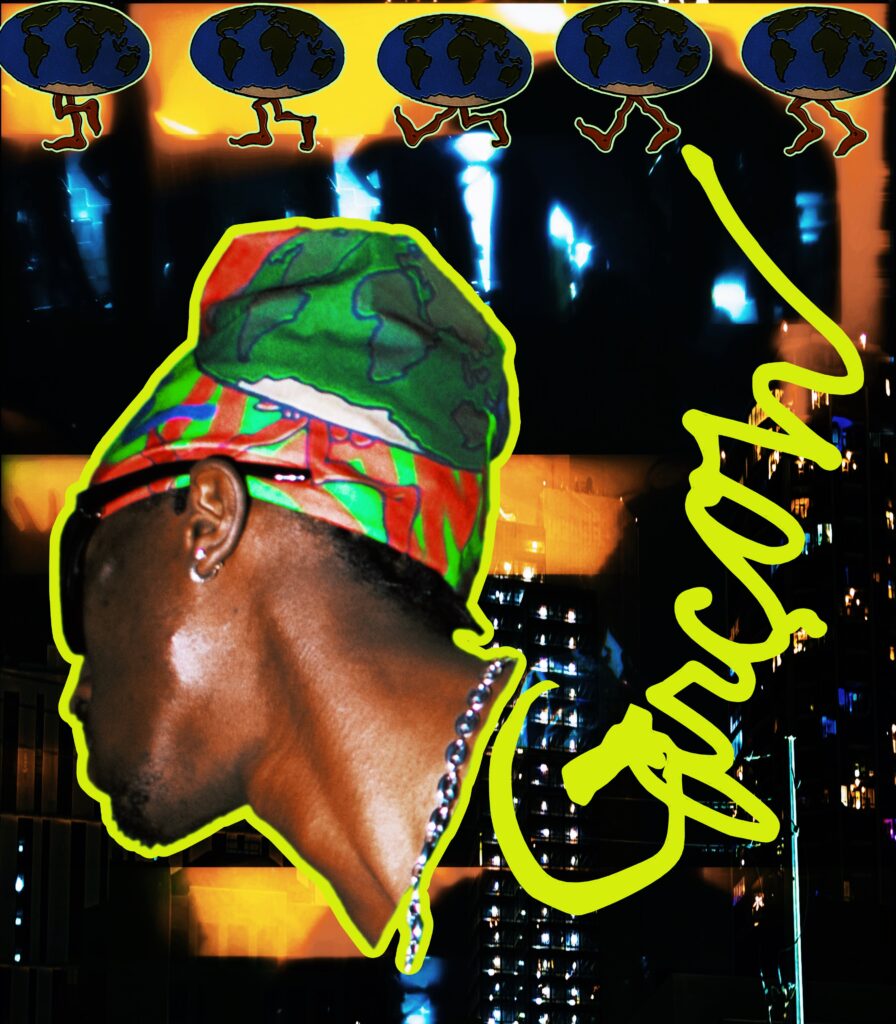
LS: I honestly wanted to DJ more in my 20s in order to get closer to fashion because I know those two worlds definitely collide. That’s more on like a European way of thinking. it definitely can mix two worlds together, which I like. Like, punk music definitely does that, which I really love.
KB: On May 9th you have something coming- how do you keep your sets fresh and engaging for different audiences?
LS: Honestly, just picking a genre that I feel is new, hasn’t been played in a while, and honestly, refreshing to me. Like, right now, I’m inspired by a lot of club and ballroom, like from the east coast of the U.S.— more Jersey Club, Baltimore Club, or just the ballroom scene where they can mix house. It definitely has a subculture, and I haven’t been to a night like that here, so I’m just really trying to look or play things that I haven’t heard or seen here in general.
KB: How do you approach partnerships and what do you look for in a collaborator?
LS: Whether it’s fashion, Music or Guesting as a DJ. I feel like connection is important. You definitely want to work with someone you are more comfortable with—Or it’s just not easy. Because all work is not going to be easy. It’s definitely an understanding of what’s supposed to be done. Especially me being more quiet or reserved. I just try to work with people where it can definitely be comfortable for both of us and it can be easy. We both understand and it’s not really a forced connection, you know?
KB: What do you see across Arizonas various music scenes, that you think can be fixed and are debilitating for artists?
LS: There’s definitely a lack of third spaces where artists can come together in a safe space that gives them the chance to network and collaborate. Depending on the scene there is always its own problems with ego. Ego can get in the middle of community especially with a lot of the male artists right now. That can also bring the feeling of comparison and competition, which isn’t really needed because we’re all working towards one thing.
KB: We talked about comparison, ego, competition. What are some of the positive things that you’ve noticed in the Arizona scene that are bringing artists together?
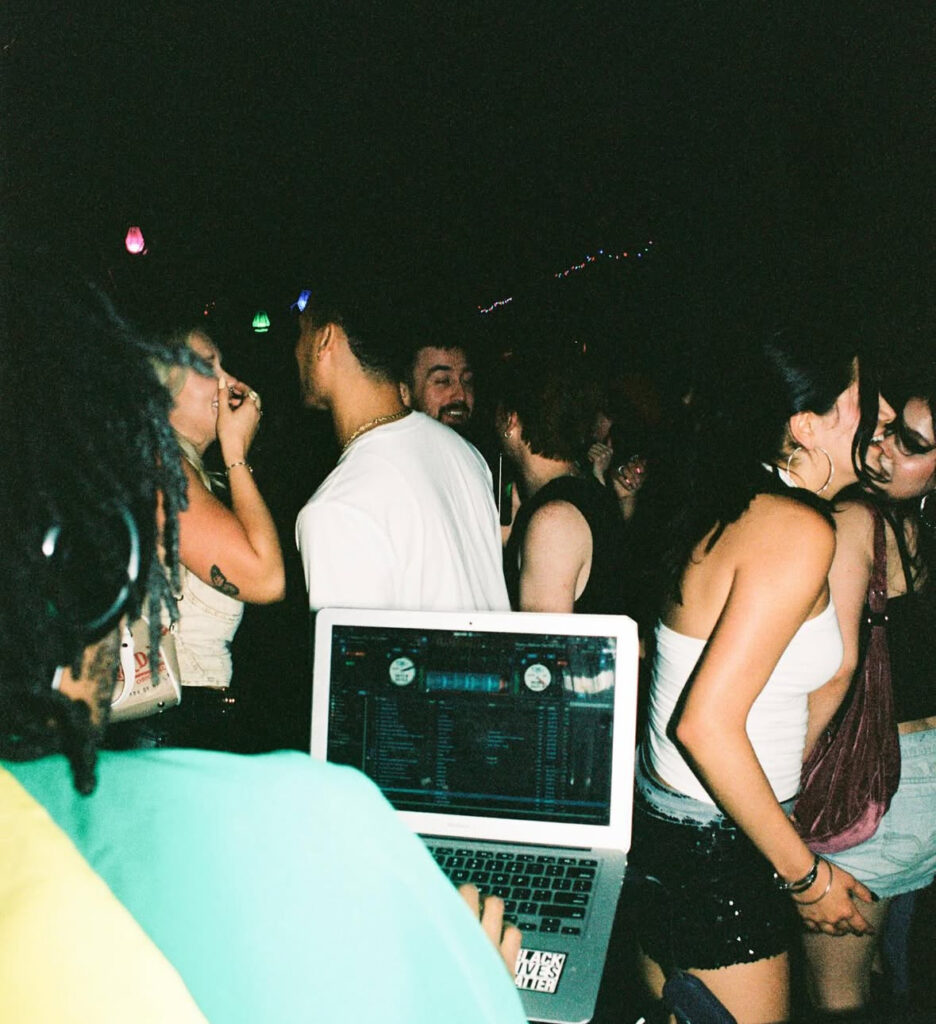
LS: One thing I do notice in the community, is that people do stick together if you have a similar sound, a similar subculture connected to them. They really support that. It’s easy for people to understand that since Arizona is such a big mixing pot, you can really find people that you didn’t think would have the same interests as you.
KB: I wanted to ask—because comparison is something that can definitely defeat an artist and take them completely out of their headspace— How do you combat that?
LS: I actually turn off my phone. If your just looking at it 24/7– with the way that instagram is now- the algorithm is only showing you marketing. Turning it off and just doing the art that your stuck contemplating helps me.
KB: So Looking ahead, what are your aspirations for expanding your brand? Any upcoming projects? And what is your ultimate end goal?
LS: I definitely want to work with more DJs in Black cities. So Arizona can hear more black club music or black electronic music that I grew up playing. If I can, id bring them here so they can play;- to widen the experience, so people can see more of what the world has to offer in this space. In terms of projects, i’ve been making a lot of stuff, but really narrowing down what I want it to sound like and fully conceptualizing it. I’m just really having fun with making new sounds. I’m ready to do everything myself. I’m ready to take on the world.
KB: Do you think there’s a unique responsibility that comes with being a black creative in spaces like fashion, nightlife, and digital art, and how do you navigate that?
LS: Yeah, it’s important because there’s a lot of aspects to black art that doesn’t get showcased. The medium I’m in is definitely black art. That’s also mainly like queer art. We talk about techno and house and things like that;- but people might not give a queer artist the space they might give a straight artist who has more momentum. I definitely want to show and give more space for that—because I feel like it’s something that needs to happen, especially here. There’s definitely a growing aspect of that here, but it could definitely get bigger.
KB: I completely agree with that. Seeing how Crescent Ballroom is exploding with all of these shows and the emergence of Afro Piano and how the reception to Club Contact has been, I think we’re definitely offering more spaces. It has taken a really long time to even get to this point, and there’s so much more work to be done;- what does it feel like to even be a part of that?
LS: For the first time in a long time i’ve had fun and im not overthinking what I put out. Im not asking myself do I fit in this space? Alot of opportunity now exposes black music and expresses music like afro beat, reggae and dance hall. Showcasing caribbean culture, different african cultures. Being someone who has an american background it’s just fun. It might sound the same to everybody but from the people who moved here from other cities— like how I did—they know it’s a difference and it could be expanded on more.
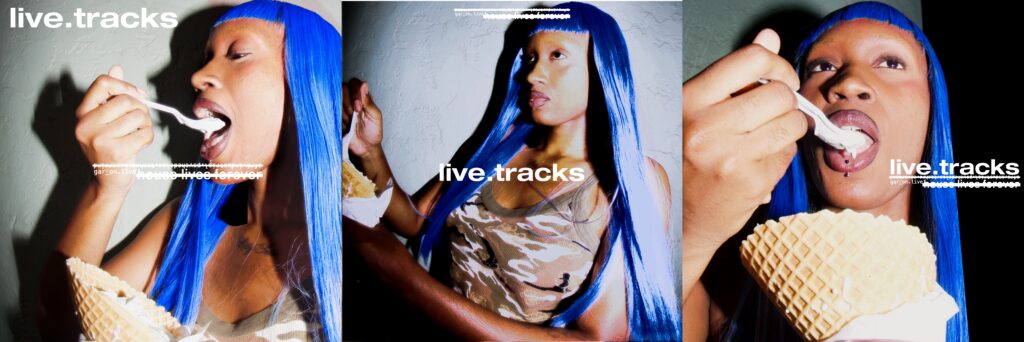
KB: Your Instagram feed definitely boasts your uniqueness. It shows that you’re on your own path, but there’s clearly some sort of inspiration there. It’s kind of like a curated visual experience. Some could even say a mood board for others. Is there an intentional rhythm or design behind what you post?
LS: No… (pauses)… well, I suppose it’s subconsciously. I definitely want to make stuff i wish i had seen with more people of my color. I love different fashion brands such as the 90s editorials with Jil Sander and Maison Margiela. it’s just not a lot of people of color anywhere in there. Like no black, no brown. It’s very linear, even with the music I love. As a 2000s kid, all you heard from electronic music was Justice and Daft Punk. I like those groups, but it’s still French and nowhere near my color. So I guess trying to curate something where it felt like black and brown and queer creatives were coming together. Creating things that were missing for me.
KB: We talked nightlife earlier in this interview. It has long been a sanctuary for queer expression. Do you feel a sense of responsibility to preserve that legacy through your work as a DJ and curator?
LS: No.. but maybe now. I didnt even think about that prior.
KB: Have you ever felt pressure to dilute or code switch your identity in creative or professional settings?
LS: Yeah, I felt that way when I was doing a lot of graphic design or fashion stuff. I feel like I started off very free and very much myself, and then it got diluted from what the general population of the fashion community is. Really, they don’t look like me or really have the influences or come up I did. It was weird trying to cater to an audience who actually reveres, studies, and loves the same things you do…but probably not in the same way. It made me think of how I got more into the house music and electronic. it realy is our space in this world where I don’t have to code switch, dilute, or even compromise as much of what I want to do.
KB: Who are some people in that scene that are supportive, constantly have your back?
LS: The DJs, I’ve met or already knew. The synergy we all have that I really enjoy. Like Jamie, Winston, Cody, JoJo, Keanu, popular underdog, Edrick and may (the coordinator of CRASH!). Those people really push me. With them, I don’t second guess my art as much, because it helps me understand that people understand it. I don’t have to really dumb it down as much as I thought.
As far as my day one friends, they have always been supportive. They might not focus on art one hundred percent of the time like I do, but I know they really appreciate it and they always gave me that space that I needed to really make art. Matthew (ldfcemathew), he DJs. He’s in LA right now, but he’s from Arizona. He’s still perfecting and working on his sound as well, too. It’s just nice having a person I can really be vulnerable musically with.
KB: Recently there has been a lot of discourse online of what a DJ actually entails- what would you define it as?
LS: I would define it as curating. It depends on what you want people to do. If you want people to dance, you have to know how to make people dance and stay dancing. If you want people to just move a certain way, you have to really know how to make them move. It’s kind of like a call and response, but doing it in the most seamless way— where it’s still enjoyable. It’s mixing a song in real time, but you’re just mixing 12 different songs at once.
KB: Are there any misconceptions about house music that you feel like you’d want to address?
LS: I want people to know that it has a lot of history from the 70s, from disco, from funk, from R&B. When I was growing up, it wasn’t necessarily just electronic music. Some R&B songs, some new wave goth songs, some punk songs — were house that I heard on the radio that were played by somebody in their 50s or 60s of the older black bands. It’s really not just for Europeans. It’s not just for one group. It could be for anybody who enjoys it. I feel like the biggest misconception is that it has to be fast, that it has to be repetitive. Thats not true— house is what you make it!
KB: Are there any final thoughts youd like to leave us off with?
LS: Thanks for allowing me to grow over the years for people who watch me make mistakes or make things that they like that I didn’t continue doing. I appreciate it.
As the conversation winds down, Larongarçon leaves us with a clear sense of artistic purpose anchored in self-expression. His creative practice is driven by a desire to disrupt norms and carve out space, not only for himself, but for others navigating similar intersections of art and culture. For Larongarçon, embracing his blackness isn’t about performance, it’s about presence. DJing has become a place where he’s found both confidence and comfort, allowing him to speak without words and connect on his own terms. With a vision that spans far beyond the music, today reminds us that the most powerful stories are often the ones still being written.

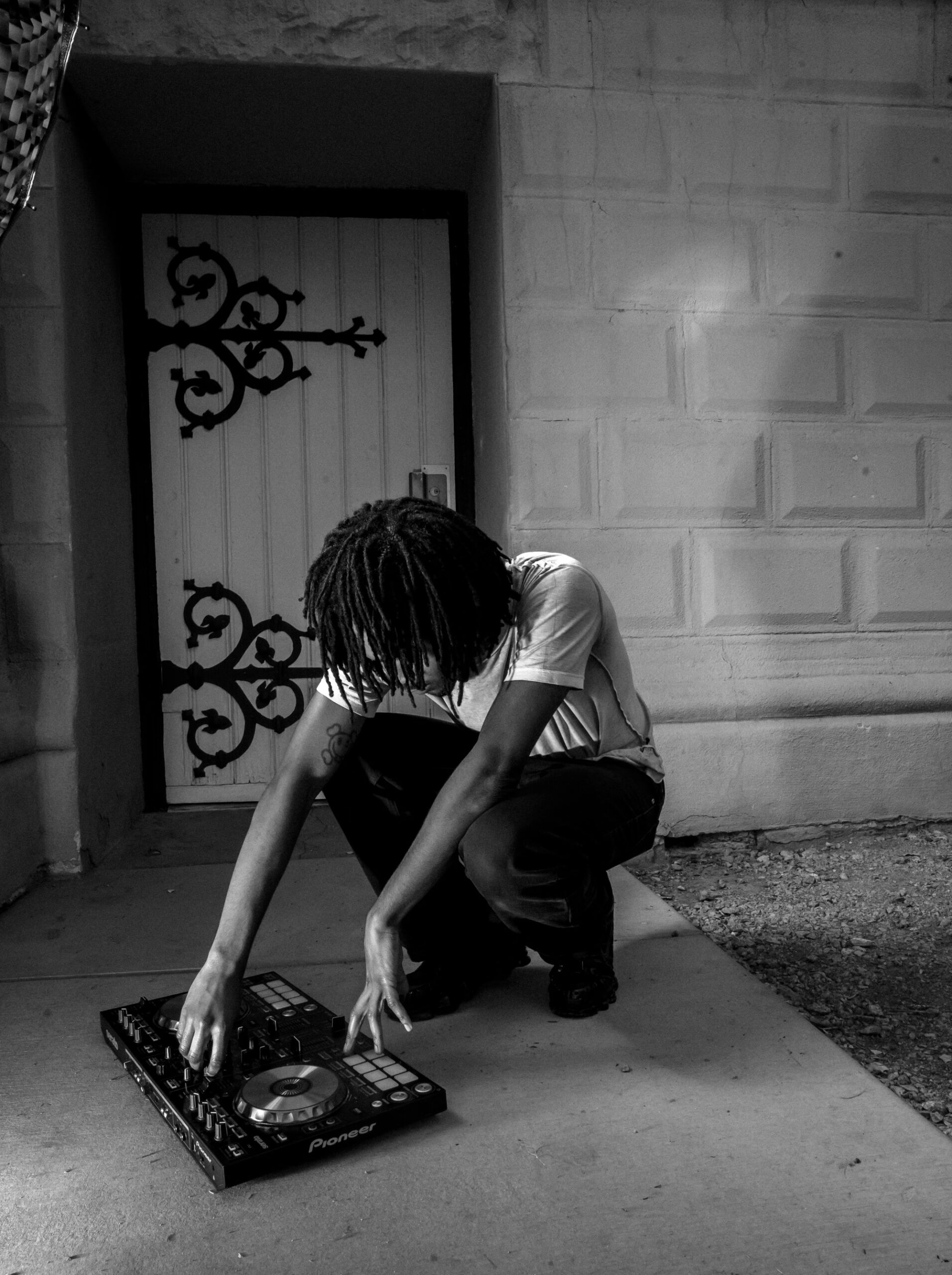


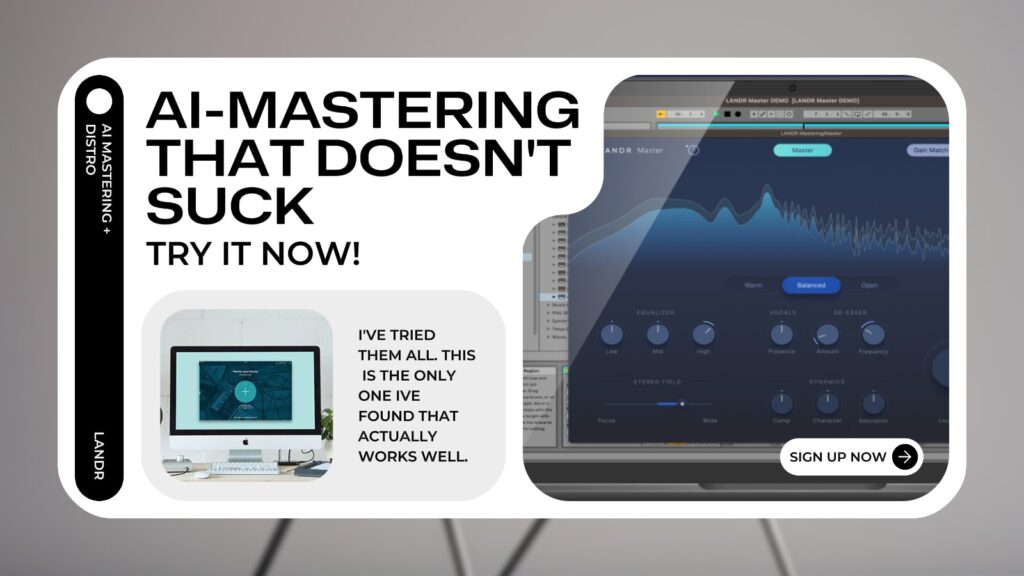


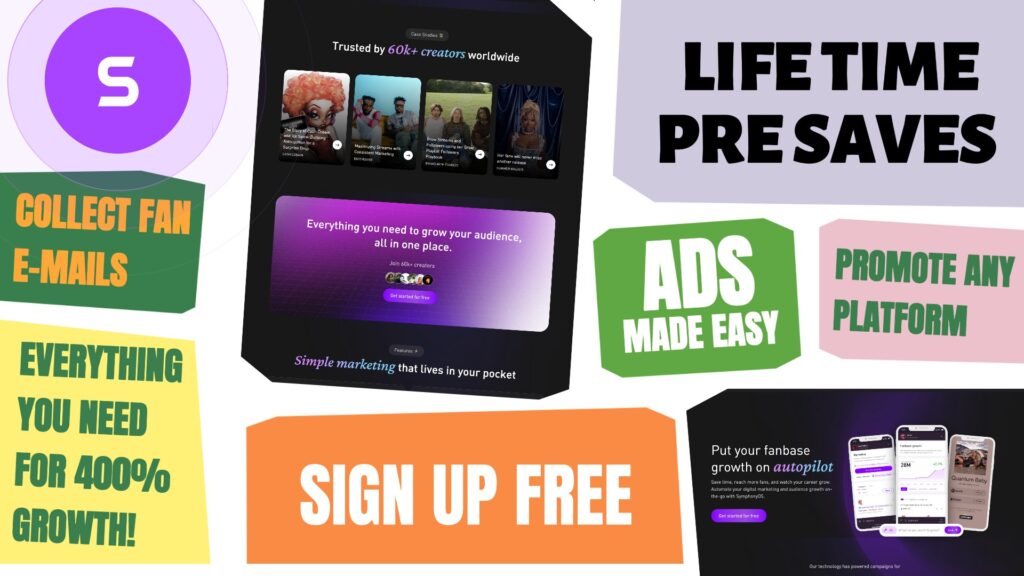
Leave a Reply